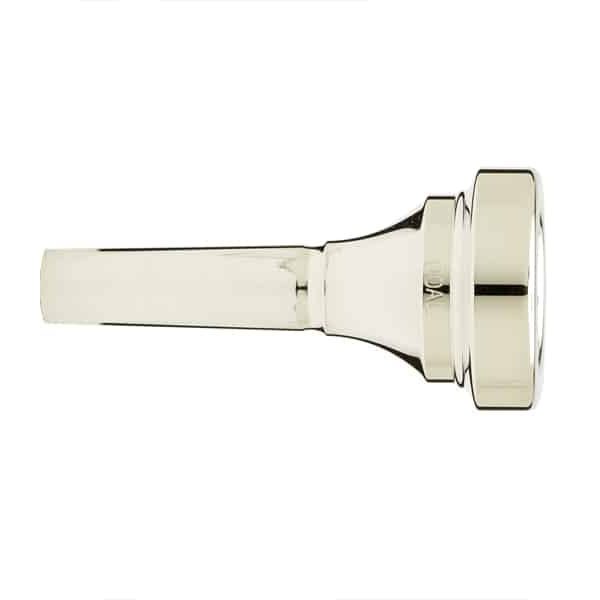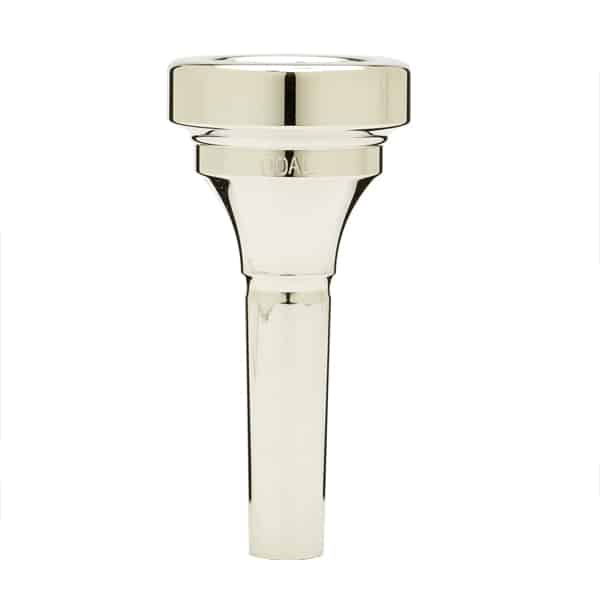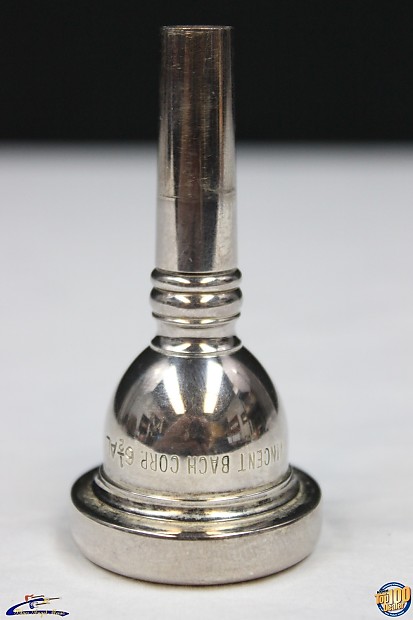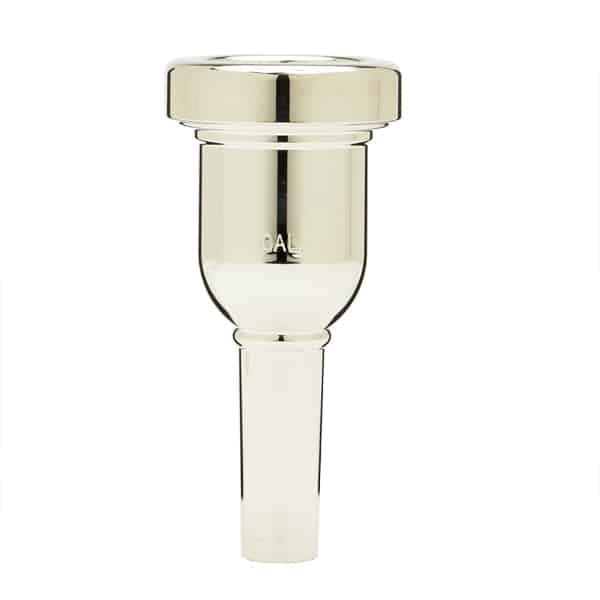Players all over the world are forever searching for the perfect mouthpiece, the one that gives them a great sound, easy to blow, has a wide range and keeps in tune. But does such a thing exist?
Probably not, mouthpieces are very personal and what suits one person probably won’t suit somebody else, and there are of course different specifications for different types of playing.
But let’s start with the basics, the main characteristics of a mouthpiece are the cup diameter and depth, rim width and style (some are more rounded than others for example). Generally, a deeper cup will give a warmer rounder sound, whereas a very shallow cup is popular with jazz trumpeters, particularly those who like to “scream”. In this instance a very shallow cup is an advantage. The rim style can also be important for comfort. A sharper, narrower rim will probably create a better seal but the sharper edges and smaller surface area often make them more uncomfortable for longer periods of playing. In addition, there are different designs which can make a significant difference. Denis Wick’s standard mouthpieces for example have a more concave shape behind the rim (see illustration below). This will make the mouthpiece lighter but the lack of metal means that it is less resonant, and sounds are less easily transmitted to the bell. Other makes such as Vincent Bach and Schilke have a cup shape behind the rim and this can give a rounder sound. Denis Wick do offer a range of Heavytop mouthpieces which have a similar shape but they are a little clunkier and less streamlined than the Bach or Schilke.
Do these make any difference to how a player sounds? The answer is easy, yes of course they do. As a general rule a deeper cup will give a richer and warmer sound, and a wider cup will have a similar effect but to a lesser extent. A wider deeper cup will probably be good for the lower register, but the width of the cup also affects the range. A wider cup makes the area of the lips within the mouthpiece bigger leading to some easier low notes, this is part of the reason that large instruments like Tubas and Bass Trombones like a big mouthpiece. The opposite of that of course is that the wider the cup the more difficult the higher register can be. It is pretty obvious if you think about it, the lips need to be very tight to achieve higher notes, so it needs the width of the cup to be as narrow as possible as it is easier to hold the lips tight over a shorter distance.
So, there are some practical reasons why mouthpieces are as they are, but a look at any of the mouthpiece manufacturers catalogues will illustrate the fact that there are a wide variety of types and sizes available, all allegedly for different purposes.
Denis Wick mouthpiece camparison chart
Vincent Bach Mouthpiece Manual
Fundamentally though the choice of mouthpiece is down to the player. As we have discussed there are certain principles involved but ultimately it comes down to the sound the player wants to achieve and how their physiology works with the mouthpiece. We are all different and embouchures are all different shapes and the only way to find the right one for us is to try out a range and see how they work. This is though more of a problem nowadays as there are fewer local instrument retailers where players can go to experiment, and it is difficult to do that online as retailers are generally unwilling to send them out for approval.
Overall, there appear to be two schools of thought about mouthpieces. Firstly the one I started with, let’s keep on the quest to find the perfect mouthpiece, however long it takes, but secondly, and the one I adhere to now is by all means look for your favourite one by trying out a range. Once you have decided though stick to the one you choose unless you need to change the way you play. But above all it may be counterproductive to go on a continual quest as it can divert attention away from improving the technique.
Another valid reason for changing mouthpieces is if you are changing genre. Trumpet players are particularly conscious of this as they may be playing high Jazz trumpet one day and then orchestral work the next and it may not be possible to play both genres on the same mouthpieces. If however, a player is playing primarily in one genre it is probably better to get used to one mouthpiece in order to establish muscle memory around its shape and size.
In conclusion, I know that mouthpieces provoke a lot of discussion, and disagreement, and everyone has a different view on these things. For me, the mouthpiece is the engine room where the sound is produced so is very important, the instrument itself is really just one big amplifier. The mouthpiece is the key to comfortable playing and producing a good sound, but it shouldn’t be seen as a silver bullet to fix all the problems a player might be experiencing. Most of it is down to relentless practice.







Yeah. Relentless practice. Don’t remind me!!